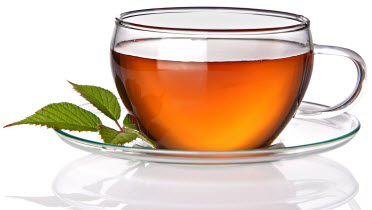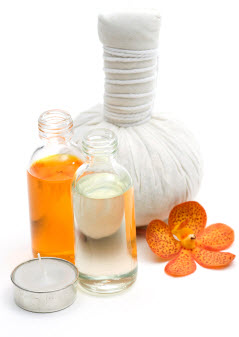A Beginner’s Guide to Herbs

Herbal medicine, also known as Therapeutic Herbalism and Herbology, has been employed successfully in various cultures around the globe for centuries as a means of supporting good health. Knowing why and how to use herbal preparations is an important step in living a healthy, preventive, holistically-minded lifestyle.
When most people think of herbal remedies, they probably think of powdered herbs sold in capsules at the local health food store. This is certainly part of the herbalist’s cache of tools. Grinding such herbs so as to fit into capsules is an excellent way to prepare and administer the therapeutic power of herbs. There are other methods of delivery, however, including:
- Teas, infusions and decoctions. These are also viable ways to make use of herbs. Depending on the herb and the part of it that is used (i.e., flower, leaves, root, bark, etc.), an herbalist will need to allow the herb to steep for an appropriate time frame. Adding boiling water to herbs and allowing them to steep releases the herbs’ therapeutic compounds, making the resulting liquid highly useful.
- Tinctures.These are liquid solutions made by soaking herbs (usually in alcohol) to draw out their therapeutic components. Tinctures are typically very strong and can be diluted by adding a measured amount to water. A tincture can be sipped slowly throughout the day.
- Ointments and lotions. These are convenient ways to apply herbs to the skin. Ointments contain natural herbs dissolved in oil; they sit on the skin and are excellent for first aid. Lotions can be creamy or liquid and typically soak into the skin, delivering an herb’s therapeutic components to the tissues and bloodstream.
- Compresses. Applying hot or cold compresses (made by soaking a clean cloth in an infusion, tea, or decoction) to the body has long been known to help reduce inflammation, treat sprains, bruises, headaches, muscular aches and other pains.
- Poultices. Similar to a compress, a poultice is applied directly to the body, but rather than a liquid extract, the whole herb is used. These are particularly good for drawing impurities out from the body, relieving congestion and pain, and for reducing inflammation and promoting healing.
- Herbal Steams. These are ideal for bronchial and respiratory conditions. Herbs are crushed or chopped to break cell walls and release vital compounds and then boiling water is poured over them in a bowl. A person leans over the bowl with a towel draped over his or her head and (with eyes closed), breathes deeply. This method carries the essential oils of herbs directly into the person’s airways, while also cleansing skin. ,
 Herbal compress soaked in an infusion of herbs
Herbal compress soaked in an infusion of herbsJust as important as how an herb’s vital compounds are delivered to the body is which herb is used in the first place. Today, there are many herbs available for many levels of health. Many of these work well together synergistically, and some are quite potent just on their own.
Working with a Herbalist, Holistic Health Practitioner, or Naturopath
A well-trained and certified Herbalist, Holistic Health Practitioner, or Naturopath will know which herbs:
- strengthen and tonify the body (adaptogens)
- stimulate sexual desire and potency (aphrodisiacs)
- promote healthy menstruation (emmenagogues)
- calm and soothe the nerves (nervines)
- aid the body in expelling mucus (expectorants) and
- promote the functioning and movement of the bowels (laxatives)
It’s very important to know which herbs to use in times of ill health and injury. However, it is also helpful to know which herbs are particularly well-suited for following a healthy and preventive lifestyle. Unlike pharmaceutical drugs which are taken only when there is a problem, many herbs can be taken as tonics and used primarily (like vitamin and nutritional supplements) to maintain good health. Some herbs can be used over the long-term, providing many health benefits that promote a strong immune system. You might be surprised to discover that some are common “foods” that you use with regularity already. Some of these include:
- Turmeric: a spice common in curry powders. It contains a compound called curcumin, which research has proven has powerful antioxidant properties. It’s also an anti-inflammatory.
- Flaxseed: the seeds and pressed oil are both used therapeutically. Flaxseeds provide digestive fiber and the oil contains large amounts of heart health-promoting essential fatty acids.
- Rosemary: a very pungent herb used often in cooking, it is high in naturally-occurring antioxidants, strengthens the circulatory system and combats fatigue and bloating.
- Garlic: a well-known and -loved herb that has antioxidant properties.
Keep in mind, of course, that although herbs are “natural,” they need to be treated with respect. “Natural” does not necessarily mean “harmless.” Whenever you are interested in using an herbal remedy, it is important that you check with your general practitioner for drug-herb-vitamin interactions. A trained and certified holistic health professional will help you select an herb that is appropriate for your needs and be sure that you are using it in the right ways.
Ryan Harrison is a certified holistic & integrative health practitioner and consultant. He is a paid consultant of DrNatura.com.
1 Herbal Tea Preparation and Uses (2011). Traditional Medicinals. Retrieved September 25, 2011 from http://www.traditionalmedicinals.com/FAQs_herbal_tea_prep_and_uses
2 Compress. (2011). Natural Standard Database. Retrieved September 25, 2011 from http://naturalstandard.com/tools/dictionary/?textinput=compress
3 Poultice. (2011). Natural Standard Database. Retrieved September 25, 2011 from http://naturalstandard.com/tools/dictionary/?textinput=poultice
4 Using a Steam Inhalation (2004). Enhancing Your Mind, Body, Spirit. International Masters Publishers, Inc. 1:6.
5 More Herbal Cold Remedies. (2004). Enhancing Your Mind, Body, Spirit. International Masters Publishers, Inc. 2:20
6 Turmeric. (2011). Natural Standard Database. Retrieved September 25, 2011 from http://naturalstandard.com/databases/herbssupplements/patient-turmeric.asp
7 Flaxseed. (2011). Natural Standard Database. Retrieved September 25, 2011 from http://naturalstandard.com/databases/herbssupplements/patient-flaxseed.asp
8 Rosemary Leaf. (2000). Herbal Medicine. American Botanical Council. Retrieved September 25, 2011 from http://cms.herbalgram.org/expandedE/Rosemaryleaf.html

